The brand methodology of Taiwan Ogilvy Advertising Ghost Ye Minggui!
Editor’s note: This article is from the micro-channel public number “sixth man” (ID: connect_yourself) , Author: Sixth person.
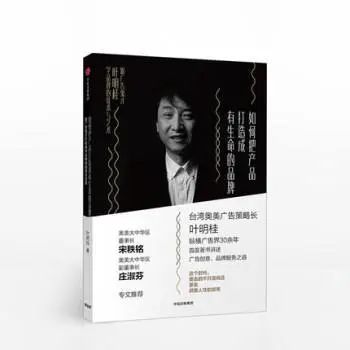
Mr. Ye Minggui ’s words may be a portrait of an advertiser ’s 30-year glorious career. They may also be regarded as a little note of his exciting life—the principles and common sense are unchanged, but what is changed is the establishment of Means and path of brand.
He was going to work in a foreign trade company after studying trade, but there is always an advertising company copywriting next to the job advertisement in the newspaper. And fresh excitement, start a life of adventure …
But because he didn’t even know what 4P (the most basic concepts of product, pricing, promotion, channel, marketing), after being rejected, he turned to AE (advertising company’s client execution, general communication skills) Stronger people can transition from this position first and enter the advertising circle). The application process was not smooth. In order to recover the umbrella that was lost in the Chinese business advertising company, he wrote 7 letters to the then business manager Zhuang Shufen (senior advertiser, formerly the president of Ogilvy Advertising China, the world ’s largest market communication agency). Sales, obtained this position with the resilience of invincibility, and began an advertising career.
In his own words: This is an experience without any elaborate long-term planning and careful and careful analysis, relying on following the feelings.
However, he may not even know it himself. Persistent diligence, understanding, and high emotional intelligence have enabled him to overcome obstacles and gain a lot in the advertising circle. In Ogilvy, Taiwan, he has created many successful brands known as the “Left Bank Cafe” and “Quanlian Welfare Center”, which are well-known across the Taiwan Strait and in three places. These brands have not only achieved commercial success but also created love and hope.
01 Ye Minggui’s brand methodology-personification
Ye Minggui summarizes this success into his own brand methodology-that is, by anthropomorphizing, injecting soul into the product, and gradually building a brand.
People choose brands because they can’t help but love them. They don’t have to compare. They don’t use PK. They just buy without hesitation and enjoy it automatically. Make people fall in love with youProducts, you must subconsciously feel that this product is not just a product or service item, but a “person”, so that people have the opportunity to fall in love with your product.
So:
A First of all, this person must be a person with firm values and clear ideas.
B Personality must be the same: people ca n’t have trust in people who are always good, bad, and hot.
C has a charming style and charming tone
D must have pure motivation
E is a person with a story: making people want to approach
The specific ways to build a brand with anthropomorphism are:
1. Propose a moving brand proposition (this is the original purpose of the product, it is the soul of a person, it should be related to the highest point of the product category, and it needs to use some part of humanity wisely Help us do business)
2. Consistent brand personality (from consistent text tone and extraordinary visual style)
3. Create an extraordinary brand style and tone (a special understanding and interpretation of the essence of the product and the brand spirit by the creator)
4. Project the goodwill behind the brand (to convey through sponsorship and public welfare; meanwhile, it is also important to express that the brand is determined not to do anything)
5. Provide a brand story that people are willing to participate in (to give the brand a sense of the brand story: tell the best of what the brand has contributed to humanity, and also explain what we want, but not the needs we meet)
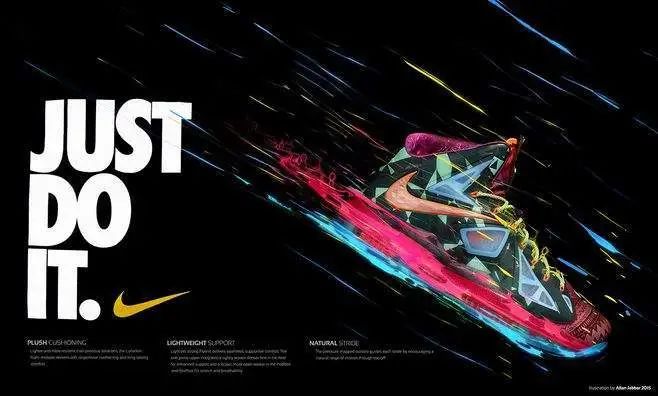
Nike’s brand proposition: In any case, the ultimate fairness and justice will be stretched; have a strong and upright personality; and the brand’s Slogan is: Just do it.
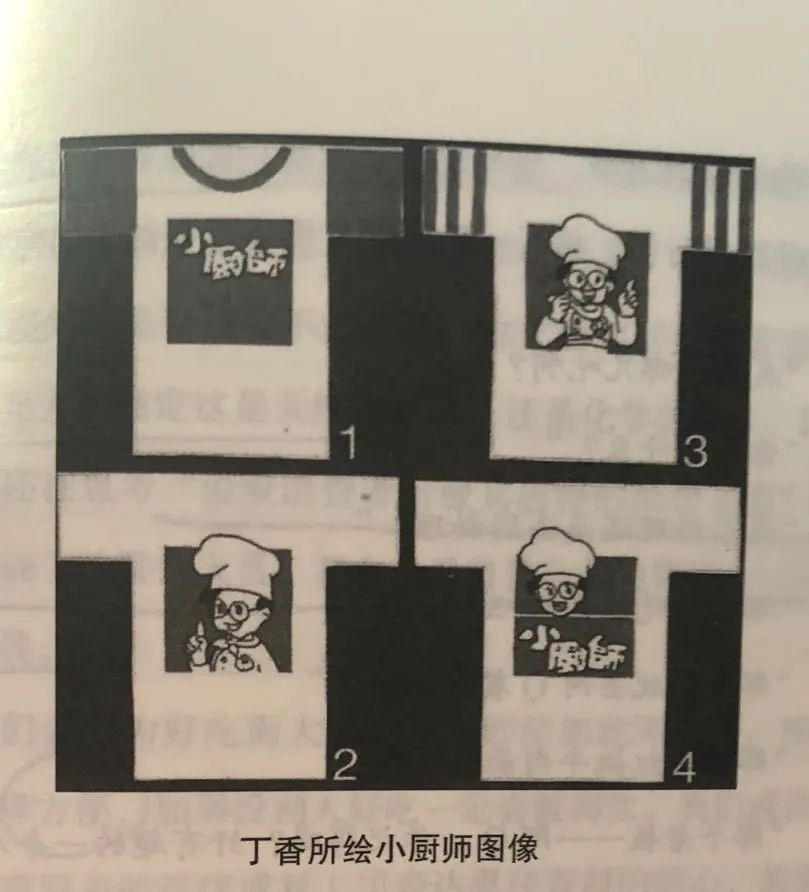
Ye Minggui’s overall image for instant noodle products for little chefs: the anthropomorphic image is loved by consumers, and the approach is similar to “Sister Zhang Junya”.
02 Ye Minggui’s positioning methodology: Product positioning-market positioning-communication positioning trinity
Ye Minggui’s positioning theory can be summarized in one sentence, that is, the Gui’s triangle positioning module:
Who am I to? What for you
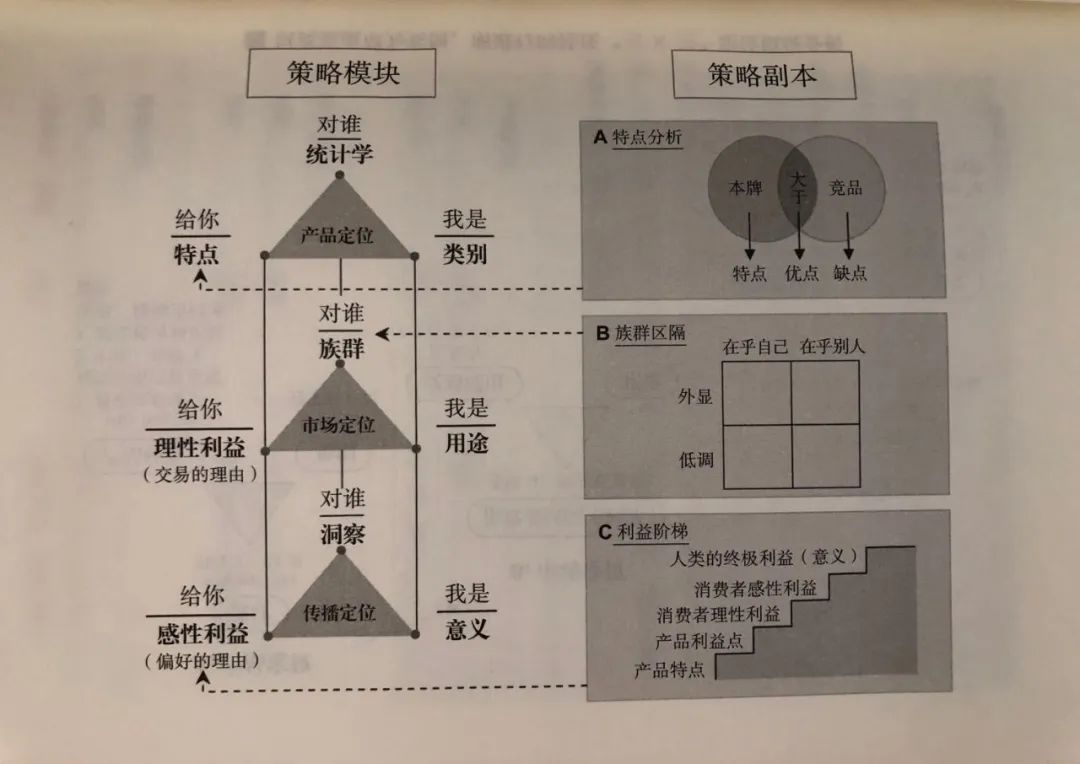
Ye Minggui’s positioning theory
He divides positioning into three levels:
1. Product positioning:
Product positioning means: to whom (using statistical descriptions), what am I (what category does it belong to, that is, category), and what do you give (product characteristics: what is special and different, needs differentiation )?
For the population described by statistics, what kind of product does XYZ belong to and what are its product characteristics?
2. Market positioning: no strategy without choice
To sum up, the market positioning is: What ethnic groups are targeted and what are their intended uses? What are the reasons they are willing to trade?
The first choice for market positioning is who you want to target your product to. The most important part of marketing is market segmentation, and how to segment it is the best one. It solves the problem of definition and identification of ethnic groups.
Brands must identify different characteristics of different ethnic groups. The conventional statistical definitions (age, gender, etc.) are no longer easy to use. In the positioning process, more behavioral and psychological descriptions should be used to describe the population.
Ye Minggui uses the field analysis method to divide the crowd ——
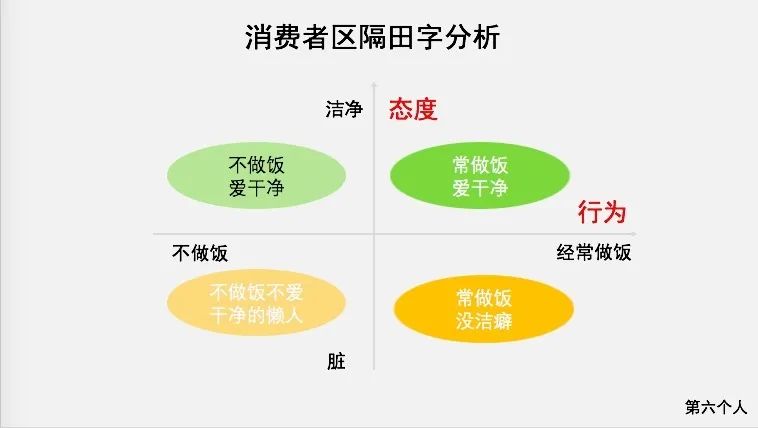
Take the kitchenware product as an example. If you want to know who your target crowd is, you can use field analysis to segment the crowd. The specific approach is to determine the two axes according to the behavior and attitude of the consumer, that is, the frequency of cooking (high or low) and whether to care about the cleanliness of the kitchen (love clean and tolerate dirty) to distinguish consumers. This results in four quadrants and different categories of people: APeople who cook often and love cleanliness B People who rarely cook but love cleanliness C People who often cook but have low requirements for cleanliness D Do not cook and do not like clean lazy people
Enterprises should enter the corresponding market and serve the corresponding consumers according to the segmented population.
3. Communication positioning:
The positioning of communication is the positioning of the spiritual level, that is, what is the significance of anthropomorphism of this product for people with what kind of psychology? What are the emotional interests of human beings?
It is also divided into three dimensions:
1) For whom:
After choosing an ethnic group based on market positioning, we can understand the psychological factors behind this ethnic group’s use of goods. We can also understand it as “consumer insight.”
Tian Zi analysis can compare the consumption mentality and motivation of the two ethnic groups. In the end, all marketing behaviors must firmly grasp the precise target group.
2) Who am I:
We must think about the meaning behind the use of this ethnic group-to understand the reasons behind the purchase of products.
3) What for you:
From product characteristics to product benefits, and then to the ultimate benefit point of the product, the so-called ultimate benefit is the emotional factor that people like this product.
This is a very agile positioning system. When dealing with Taiwan’s high-speed rail projects, Ye Minggui finally put forward the “real contact, Be there” brand proposition. The real competitors of Taiwan’s high-speed rail are not long-distance buses, Taiwan Railways, and telecommunications companies, but today’s real-time video, real-time calls, and communications (in marketing, we call them heterogeneous competitors). These tools or lifestyles have replaced the use of high-speed rail. The need to go somewhere and be there.
Thus, “real contact” advocates people to go out, and combined with the high-speed rail business to form a keen insight and precise strategy, Ogilvy Taiwan has served high-speed rail projects for many years.
1. Propose a moving brand proposition (this is the original purpose of the product, it is the soul of a person, it should be related to the highest point of the product category, and it needs to use some part of humanity wisely Help us do business)
2. Consistent brand personality (from consistent text tone and extraordinary visual style)
3. Create an extraordinary brand style and tone (a special understanding and interpretation of the essence of the product and the brand spirit by the creator)
4. Project the goodwill behind the brand (to convey through sponsorship and public welfare; meanwhile, it is also important to express that the brand is determined not to do anything)
5. Provide a brand story that people are willing to participate in (to give the brand a sense of the brand story: tell the best of what the brand has contributed to humanity, and also explain what we want, but not the needs we meet)

Nike’s brand proposition: In any case, the ultimate fairness and justice will be stretched; have a strong and upright personality; and the brand’s Slogan is: Just do it.

Ye Minggui’s overall image for instant noodle products for little chefs: the anthropomorphic image is loved by consumers, and the approach is similar to “Sister Zhang Junya”.
02 Ye Minggui’s positioning methodology: Product positioning-market positioning-communication positioning trinity
Ye Minggui’s positioning theory can be summarized in one sentence, that is, the Gui’s triangle positioning module:
Who am I to? What for you

Ye Minggui’s positioning theory
He divides positioning into three levels:
1. Product positioning:
Product positioning means: to whom (using statistical descriptions), what am I (what category does it belong to, that is, category), and what do you give (product characteristics: what is special and different, needs differentiation )?
For the population described by statistics, what kind of product does XYZ belong to and what are its product characteristics?
2. Market positioning: no strategy without choice
To sum up, the market positioning is: What ethnic groups are targeted and what are their intended uses? What are the reasons they are willing to trade?
The first choice for market positioning is who you want to target your product to. The most important part of marketing is market segmentation, and how to segment it is the best one. It solves the problem of definition and identification of ethnic groups.
Brands must identify different characteristics of different ethnic groups. The conventional statistical definitions (age, gender, etc.) are no longer easy to use. In the positioning process, more behavioral and psychological descriptions should be used to describe the population.
Ye Minggui uses the field analysis method to divide the crowd ——

Take the kitchenware product as an example. If you want to know who your target crowd is, you can use field analysis to segment the crowd. The specific approach is to determine the two axes according to the behavior and attitude of the consumer, that is, the frequency of cooking (high or low) and whether to care about the cleanliness of the kitchen (love clean and tolerate dirty) to distinguish consumers. This results in four quadrants and different categories of people: APeople who cook often and love cleanliness B People who rarely cook but love cleanliness C People who often cook but have low requirements for cleanliness D Do not cook and do not like clean lazy people
Enterprises should enter the corresponding market and serve the corresponding consumers according to the segmented population.
3. Communication positioning:
The positioning of communication is the positioning of the spiritual level, that is, what is the significance of anthropomorphism of this product for people with what kind of psychology? What are the emotional interests of human beings?
It is also divided into three dimensions:
1) For whom:
After choosing an ethnic group based on market positioning, we can understand the psychological factors behind this ethnic group’s use of goods. We can also understand it as “consumer insight.”
Tian Zi analysis can compare the consumption mentality and motivation of the two ethnic groups. In the end, all marketing behaviors must firmly grasp the precise target group.
2) Who am I:
We must think about the meaning behind the use of this ethnic group-to understand the reasons behind the purchase of products.
3) What for you:
From product characteristics to product benefits, and then to the ultimate benefit point of the product, the so-called ultimate benefit is the emotional factor that people like this product.
This is a very agile positioning system. When dealing with Taiwan’s high-speed rail projects, Ye Minggui finally put forward the “real contact, Be there” brand proposition. The real competitors of Taiwan’s high-speed rail are not long-distance buses, Taiwan Railways, and telecommunications companies, but today’s real-time video, real-time calls, and communications (in marketing, we call them heterogeneous competitors). These tools or lifestyles have replaced the use of high-speed rail. The need to go somewhere and be there.
Thus, “real contact” advocates people to go out, and combined with the high-speed rail business to form a keen insight and precise strategy, Ogilvy Taiwan has served high-speed rail projects for many years.

